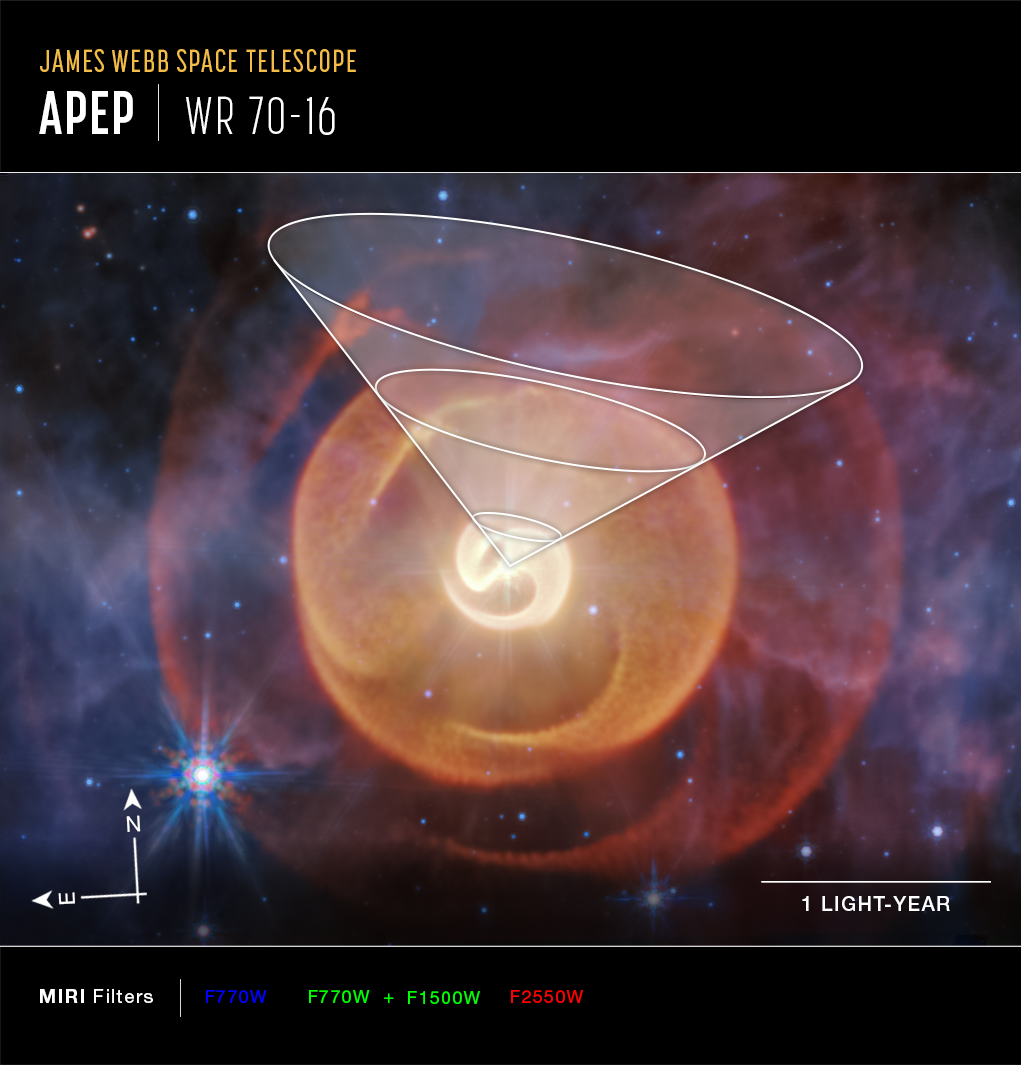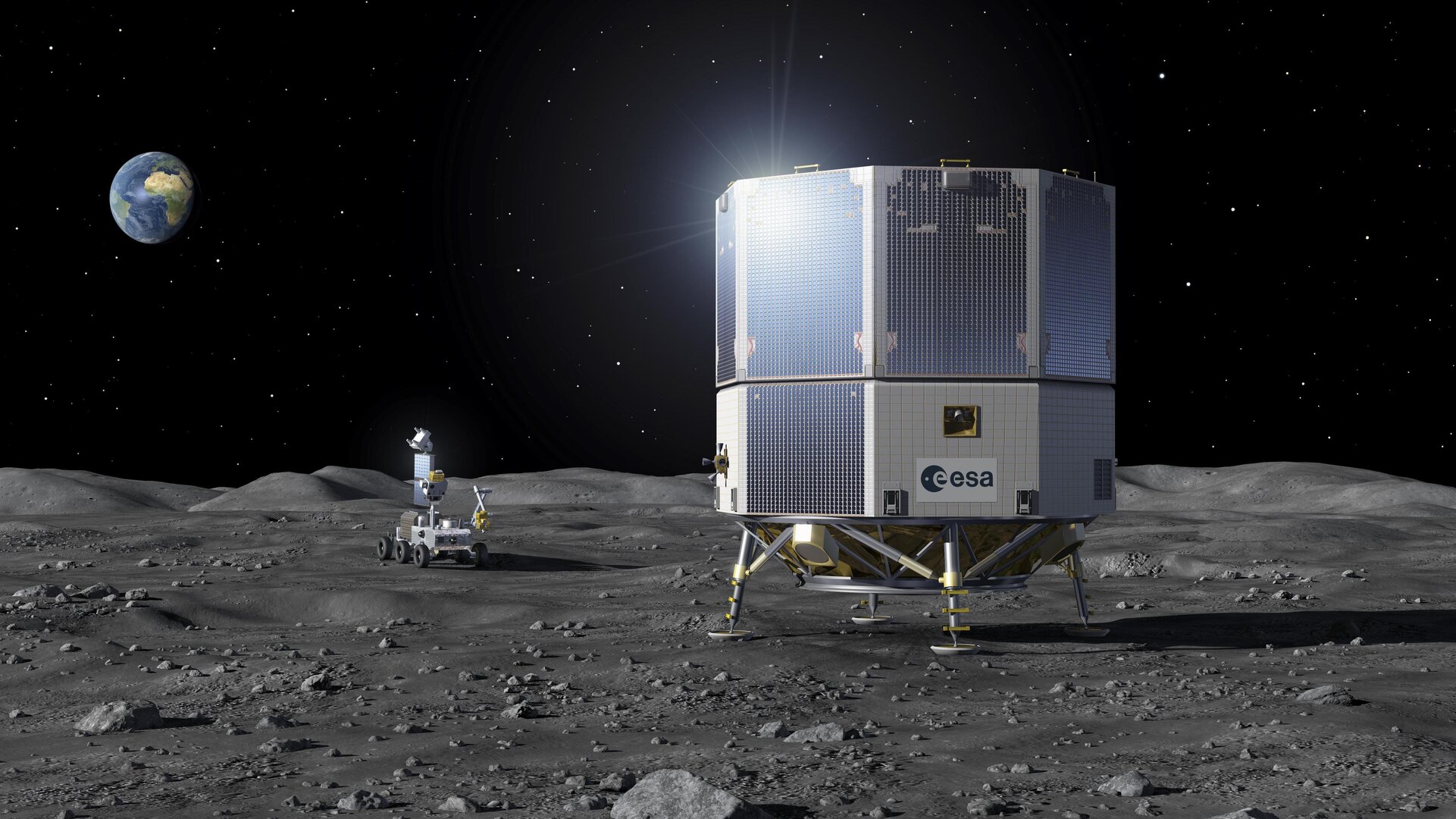Now Reading: James Webb Space Telescope captures ‘one-of-a-kind’ triple star system that looks like a cosmic embryo (image)
-
01
James Webb Space Telescope captures ‘one-of-a-kind’ triple star system that looks like a cosmic embryo (image)
James Webb Space Telescope captures ‘one-of-a-kind’ triple star system that looks like a cosmic embryo (image)

A nested series of dusty spirals is captured swirling around a mighty triple star system containing two of the rarest stars in the galaxy in a new image from NASA’s James Webb Space Telescope (JWST).
The triple system is nicknamed Apep, after the Egyptian god of chaos, and cosmic chaos. It’s on dramatic display in JWST‘s new mid-infrared image, which makes the object look like an immense cosmic embryo. Two of the stars in Apep are Wolf-Rayet stars, which are massive and extremely hot stars that live a life bordering on instability, with powerful stellar winds carrying huge clumps of material from them, exposing a helium-, nitrogen- and carbon-rich interior. Only about 1,000 Wolf-Rayet stars are known in our Milky Way galaxy, among more than 100 billion other stars.
The material removed by the winds — not winds as we know them on Earth, but streams of charged particles — forms a nebula, and when a Wolf-Rayet star exists in a binary system with another star, the gravitational interactions between the two can sculpt the shape of that nebula. Apep, however, is unique as far as we know in that it features two Wolf-Rayet stars revolving around one another on a 190-year orbit. At closest approach, their stellar winds collide, producing dense, carbon-rich dust that forms a spiral shape over the course of 25 years each time. Each spiral then begins the journey of expanding outwards.
“This is a one-of-a-kind system with an incredibly rare orbital period,” said Ryan White, a Ph.D. student at Macquarie University in Sydney, Australia, in a statement. “The next longest orbit for a dusty Wolf-Rayet binary is about 30 years. Most have orbits between two and 10 years.”
When Apep was discovered in optical light in 2018 by the European Southern Observatory’s Very Large Telescope in Chile, only the brightest, innermost spiral was visible, but more were suspected to exist. JWST’s Mid-Infrared Instrument (MIRI) has now captured them, nested inside one another and representing four close approaches of the stars over the past 700 years or so. The outermost spiral is the faintest, on the periphery of JWST’s vision.
“Looking at Webb’s new observations was like walking into a dark room and switching on the light — everything came into view,” said Yinuo Han of the California Institute of Technology in Pasadena, who is the lead author of one paper describing the observations, while White is lead author of another. “There is dust everywhere in Webb’s image, and the telescope shows that most of it was cast off in repetitive, predictable structures.”
White’s study refined the orbits of Apep’s stars by combining the JWST data with eight years’ worth of observations by the Very Large Telescope that chart the expansion of the innermost dusty shell.
Remarkably, the images betray the presence of a third star, even more massive than the two Wolf-Rayet stars. In both the Very Large Telescope’s and JWST’s images, the triple star system is unresolved, looking like a single star at Apep’s distance of roughly 8,000 light-years, although their exact distance is a continuing mystery.

While the Wolf-Rayet stars have masses between 10 and 20 times that of our sun, their triple companion is a supergiant between 40 and 50 times as massive as the sun. Its presence is revealed through the way it interacts with the stellar winds and dust from the Wolf-Rayet stars, leaving a cavity in the expanding, spiraling shells. This gap is best seen between the 10 o’clock and 2 o’clock positions in the JWST image.
“The cavity is more or less in the same place in each shell and looks like a funnel,” said White.
All three stars are destined to explode as a supernova, the two Wolf-Rayet stars possibly going boom as gamma-ray bursts leaving behind stellar-mass black holes that will be orbited by a neutron star left behind when the more massive supergiant explodes.
Both papers were published Wednesday (Nov. 19) in The Astrophysical Journal, with Han’s paper found here and White’s paper here.
Stay Informed With the Latest & Most Important News
Previous Post
Next Post
Previous Post
Next Post
-
 012024 in Review: Highlights from NASA in Silicon Valley
012024 in Review: Highlights from NASA in Silicon Valley -
 02Panasonic Leica Summilux DG 15mm f/1.7 ASPH review
02Panasonic Leica Summilux DG 15mm f/1.7 ASPH review -
 03How New NASA, India Earth Satellite NISAR Will See Earth
03How New NASA, India Earth Satellite NISAR Will See Earth -
 04And Thus Begins A New Year For Life On Earth
04And Thus Begins A New Year For Life On Earth -
 05Astronomy Activation Ambassadors: A New Era
05Astronomy Activation Ambassadors: A New Era -
06SpaceX launch surge helps set new global launch record in 2024
-
 07Space Force plans new ‘Futures Command’ amid pressure to speed up modernization
07Space Force plans new ‘Futures Command’ amid pressure to speed up modernization




















